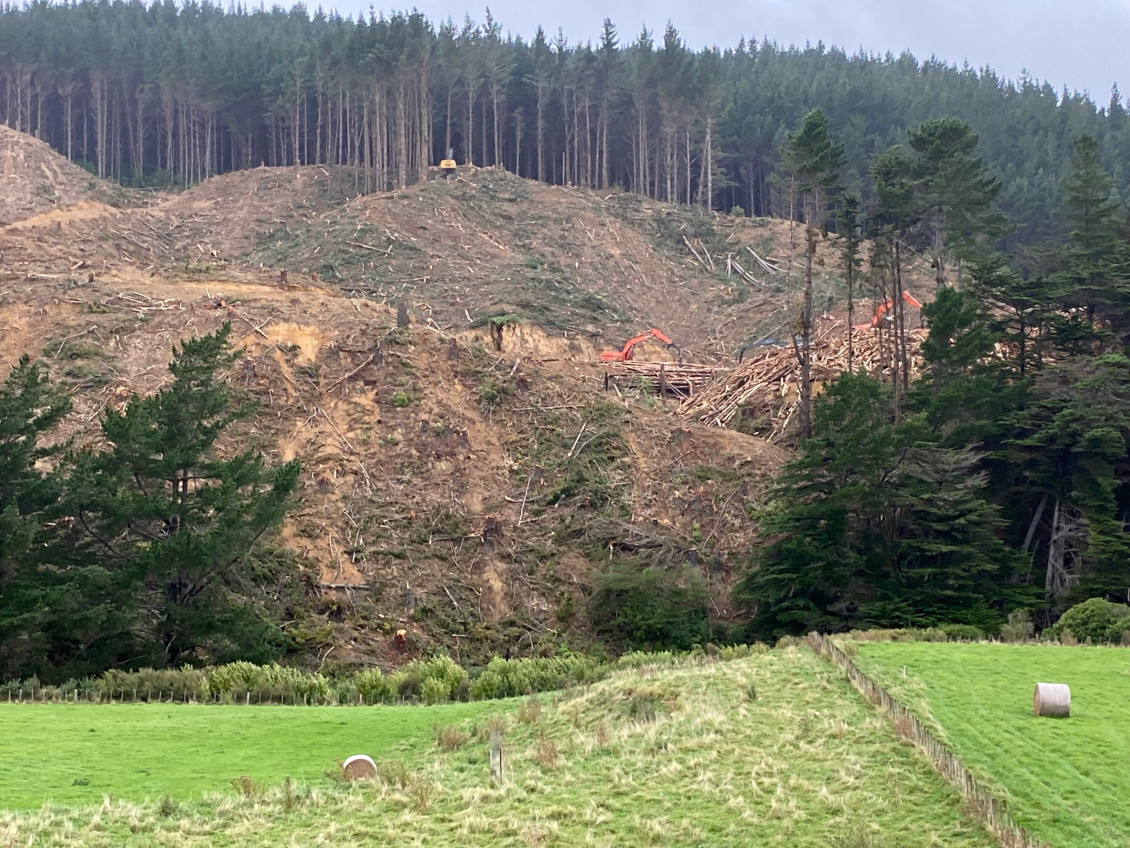Forestry slash is any woody material left behind after trees are harvested, pruned or thinned in a plantation forest. It’s made up of bits of branches and bark, as well as small offcuts or woodchips leftover from preparing logs for sale to businesses.
Natural forests also produce leaves and woody material that collects on the forest floor. This happens when leaves and twigs are shaken free during storms or through natural forest processes - but this material isn’t called slash.
We can tell the difference between slash and natural forest material, because slash will have machinery or cutting marks from the harvesting or pruning process. Slash from plantation forests is usually radiata pine, which also makes it easy to identify.
National rules for managing forestry slash
The National Environmental Standards for Plantation Forestry (NES-PF) provides rules to follow for all plantation forestry activity – this includes rules for how slash must be managed.
It’s important that slash is managed effectively. If it enters rivers or streams, it can:
- Change water chemistry, which can impact the plants and animals that live in the water
- Block waterways and potentially cause damage to infrastructure.
Forestry operators submit a plan to us to review and approve before harvesting trees. This plan must include how they will manage slash.
Slash rules that forestry operators must follow include:
- Placing slash on stable ground, avoiding steep hills or slip-prone spots
- Keeping slash well away from rivers and streams
- Managing slash so it won’t be carried off-site by significant river flooding.
Other NES-PF rules say that trees can’t be harvested too close to a river or stream. This distance depends on the size of the waterway.
Forestry operators must actively monitor their work to make sure they meet slash and other rules throughout the tree harvesting process.
A hillside where trees have just been harvested won’t look pretty to people passing by, but that doesn’t mean that the forestry operator doing this work isn’t following the rules.
However, if operators don’t follow NES-PF rules fines, legal action, or other penalties can apply.
Find out more about wider plantation forestry rules and regulations
Think a forestry operator is not meeting the rules? Let us know
If you think forestry work is being carried out in a way that doesn’t meet national rules or is damaging waterways, please report this to our 24-hour Environment Hotline on 0800 496 734.
We investigate all environmental issues reported to us.
Did you know?
Did you know that we work with local contractors to remove slash from forestry land that we own for use as firewood?
In the first two months of 2023 we removed:
- 354 tons of slash from Hukinga in Akatarawa Forest
- 152 tons of slash from Battle Hill Farm Forest Park.

Get in touch
- Phone:
- 0800 496 734
- Email:
- info@gw.govt.nz
